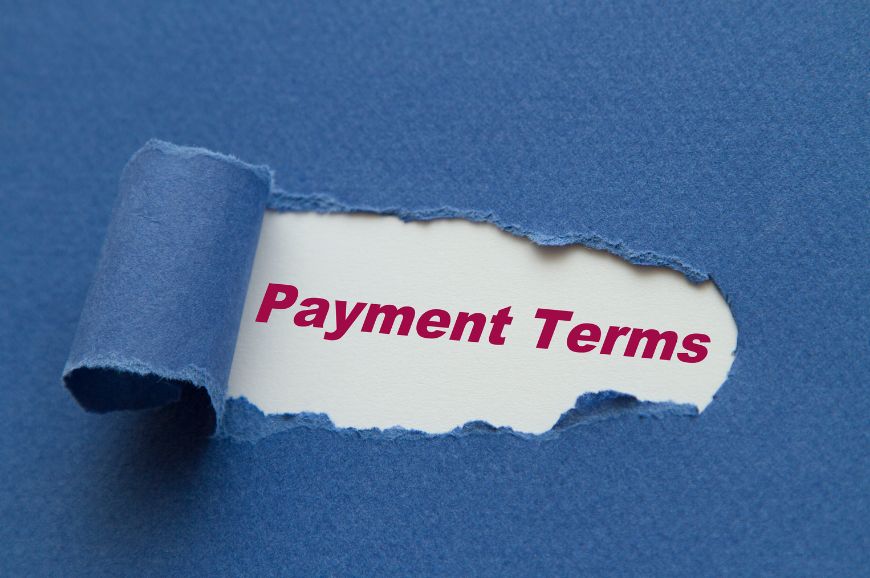CFOs are constantly faced with a challenging environment when it comes to managing supply chain finances. This is particularly true, in a world where the global economy faces rising uncertainty. Most frequently, the critical weak point is the traditional approach to payment terms. These are seen as challenges that create blocks along the way which in turn pose a threat to liquidity and the overall stability of the supply chain.
For the CFOs, the effects are doubling up: all the cash inflows that are delayed are straining a company’s working capital. At the same time, extended payment terms pose unnecessary stress on suppliers, putting them into not-so-great financial situations. What’s more these problems are not only affecting the relationships with the suppliers, but they also echo through the whole supply chain, oftentimes making it inefficient, with higher costs and ultimately to reputational risks.
On the long run, CFOs are trying to find solutions to improve the financial performance, as well as the resilience of the supply chain. In this journey, it is essential to better understand the payment terms and see the real value they pose in the process of unlocking liquidity and earning trust among supply chain stakeholders.
The Hidden Costs of Traditional Payment Terms
When it comes to payment terms, the industry standard in business transactions have always been net 30, net 60, or even net 90 days. From the buyer’s perspective these terms always come in handy because they do indeed help serve as a buffer for the negative financial impacts. On the other hand, suppliers see these terms as a genuine burden to their business along with the lines of significant and costly issues that can sometimes be missed by CFOs.
Bottlenecks in Liquidity
Extended payment terms delay cash inflows, which can constrict a company’s liquidity. This makes it harder for companies to cover operating expenses, pay down debt, or fund strategic initiatives. For CFOs, this is not just a temporary inconvenience, but rather an issue that keeps popping up, limiting the financial agility of the business, and putting additional pressure on managing the working capital.
Ripple Effects on Suppliers
The effect of extended payment terms is mainly badly perceived by suppliers. And it is not without a good reason. Waiting months to get paid can, in fact, strain their overall financial stability, and force them to seek the solutions in some kind of expensive short-term loans, or even reduce their investment plans in their own operations. Smaller suppliers, in particular, are oftentimes not able to go through with these delays, and later experience being far behind the production deadlines. This behaviour might also lead to lower-quality outputs that can disrupt the entire supply chain.
Operational and Reputational Risks
All of these financial strains don’t just stay confined to the balance sheet. When the supplier is unstable, the situation can create operational inefficiencies, such as production slowdowns or quality issues. These effects can ripple back to the buyer very quickly. Besides the operational impact, this effect will in the end harm the business’s reputation with other partners, customers, and stakeholders.
The Domino Effect on Suppliers
The effects of the strained financials when talking about suppliers can extend far beyond just their own operation cycle, as we have already mentioned. The stress placed on them often overflows to the entire supply chain. This can create challenges that will without a doubt land back at the CFO’s office.
Financial Strain Leads to Operational Disruptions
When it comes to paying out employee salaries or sourcing raw materials, suppliers that are dealing with delayed payments more often than not struggle to meet their own obligations. This notion is making them unstable and they can easily fall into a situation where they are working with reduced capacity, thus lowering the quality of their products. On the other side are the buyers, who due to these supplier struggles, will certainly experience delayed deliveries, and possible disruption in their processes due to the unexpected shortages.
Higher Costs for Buyers
Another important component in this equation is the costs. It is safe to say that the inefficiencies caused by supplier instability don’t come cheap. In fact, companies can lose millions of dollars due to only one short disruption. What can companies do, to not fall into this kind of situation is:
- spend more resources on expedited shipping,
- search for alternative suppliers at premium prices, or
- invest in additional oversight to retain the quality.
However, these are all reactive measures, and every company needs to carefully use them. Otherwise, the measures will only become a burden on the financial landscape, as they can cause inflated costs and erosion of the profit margins.
Deteriorated Relationships and Loss of Trust
Perhaps the most immaterial but critical consequence is the damage to trust. Suppliers who feel unsupported by extended payment terms may deprioritise their partnerships with the buyers, and move their focus instead to more reliable customers. This symbolises a breakdown in trust. This in turn, severely damages the long-term relationships and makes it harder to negotiate favourable terms in the future business dealings.
This creates a domino effect that plastically shows the nature of supply chains. When one part of this great system fails, the consequences can be felt throughout the entire network, increasing the risks and the costs for all parties involved.
The Role of Trust
Although everyone rarely talks about trust, trust is the foundation of any effective supply chain. Basically, trust makes sure that the suppliers, the buyers, and the other stakeholders can rely on each other to deliver on the commitments, especially in more challenging times. Without this trust, even the most efficient supply chains, instantly become prone to disruptions, and can face inefficiencies that might even damage their reputation.

Do you find this article interesting?
Subscribe to our Newsletter for updates on the latest blog articles.
Trust as a Critical Asset
Trust is built on four essential pillars: capability, reliability, humanity, and transparency. When suppliers trust that their buyers will honor the payment commitments, and buyers trust that their suppliers will deliver on quality and timelines, we can say that the supply chain operates in smooth manner. However, one Deloitte survey reveals a significant gap: executives often overestimate trust levels in their supply chains by an average of 20%. This blind spot can leave companies not ready for risks that directly influence their financial performance.
So, what can CFOs do?
Investments in Trust-Building
To create trust, CFOs first of all have to nurture a proactive approach. This includes:
- Investing in customer experience initiatives to reinforce supplier relationships.
- Improving cybersecurity so all the sensitive financial and operational data is suitably protected.
- Committing to sustainability practices that go in line with the values of all the suppliers and the stakeholders.
- Implement advanced technologies to make progress in the supply chain visibility and its reliability.
To put it simple, when companies prioritise trust-building, they mitigate the risks and unlock measurable benefits. For example, improved reliability and transparency, have been shown to correlate with higher financial growth rates and better supplier performance.
Trust as a Strategic Component
For the CFOs, trust is not just a theoretical concept, but it portrays a measurable and actionable driver of resilience and success. The important thing is to create a whole operational landscape with trust as the core value so that when the first crisis knocks on your door, all the stakeholders can be prepared and can easily maintain the continuity of their operations.
The Strategic Role of CFOs in Addressing Payment Terms
CFOs are the ones who lead the way of changes in payment terms and how they are managed and structured. They have the power to make decisions that will influence the liquidity of the company and the stable nature of the supply chain. Therefore, they need to step up and create a strategic advantage. Let’s see how they can do this.
Reevaluating Payment Term Practices
Traditional payment terms commonly reflect some outdated practices that prioritise the buyer’s flexibility over the supplier’s financial stability. CFOs can be the leaders of the shift toward more just solutions, in a way where they can:
- Implement early payment programs to offer suppliers faster access to funds while maintaining control over working capital.
- Explore dynamic discounting models that provide incentives for early payment without straining the buyer’s cash flow.
- Using digital platforms, to streamline payment processes and reduce administrative troubles.
Balancing Liquidity with Supply Chain Stability
CFOs have to make a balance between preserving healthy liquidity and supporting suppliers. This can be done by engaging flexible payment structures, to reduce operational risks, and improve the overall efficiency of the supply chain. This approach also allows the CFOs to optimise their own working capital without compromising long-term partnerships.
The Strategic Payoff
Proactively addressing payment terms does more than mitigate risks—it strengthens the supply chain ecosystem, enhances supplier relationships, and positions the company as a reliable partner. This strategic alignment not only drives operational efficiency but also builds a resilient foundation for navigating future challenges.
To Sum Up
Payment terms are far more than just financial agreements: they are a strategic component that has an impact on a certain company’s liquidity, its supplier relationships, and overall supply chain resilience. When the company manages them thoughtfully, it can unlock cash flow, foster trust with partners, and act as a guard against supply chain disruptions.
In this landscape, those CFOs who will have a proactive approach when addressing payment terms will have better chances of handling today’s financial and operational challenges that are of a complex nature. What can CFOs do?
First of all, they can invest in trust-building initiative, to boost the basis of their relationships with suppliers. Additionally they can use digital payment platforms, and create an ecosystem that will primarily base on stability and collaboration.
At the end, every decision a CFO makes towards payment terms, will ultimately shape how the company is perceived from outside, leading to building a better resilience plan and providing a steady ground for easily seizing future opportunities.
Ultimately, the decisions CFOs make about payment terms don’t just impact the bottom line—they shape the company’s reputation, resilience, and readiness to seize future opportunities. The time to act is now.





